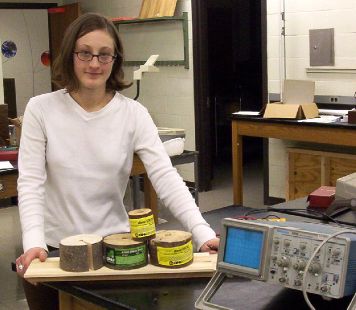
Good
Vibrations
Ani Schatz '03
Abstract:
The exponential growth of snowboarding popularity in the last decade has fostered fierce competition among snowboarding manufacturers, each of whom claims to have discovered the perfect formula for a snowboard.
Currently, all snowboards have the same basic construction containing a base, outer metal edging, a core, and a top sheet. Companies are experimenting with each of these components in their quest for the next best board. The desirable properties of cores which all companies strive for are increased strength and decreased weight.
Cores are generally composites of several different woods, sandwich construction, and are so designed to have some of the properties of each of the different component woods. Considering the vast range of products now available, and the ever more dramatic claims of the various manufacturers, it is often difficult to distinguish between what real technological advances have been made, and what is primarily marketing hype. One example of this, which is the focus of this discussion, arises from the “new and innovative”core concept employed by Gnu Snowboards by Mervin Manufacturing in their higher end model called “Altered Genetics”; they claim it is the “world's most advanced snowboard”. Gnu and Mervin and their altered genetics core wood claims to have achieved a new level of snowboard technology by genetically engineering a single tree with properties of balsa, bamboo, and aspen, which therefore allows them to use only this one type of wood in their cores, rather than a composite, while still reaping the benefits provided by using different woods and their associated different properties.
The lack of information concerning such a new species of tree in the National or International Patent office offers immediate, initial support to (the marketing hype theory) as, presumably, an innovation such as a genetically engineered tree would be patented to prevent competition from engineering the same thing. Further claims (made by Gnu) can be even more exotic, e.g. “our core is made from the molten core of the earth”. This is not a statement I can test directly. Therefore I decided to examine a claim that was testable by scientific methods, that is, the harmonic behavior of woods.
For more information, contact Dr. Brian Watson:
Return To 2003 Senior Research
|
|
||
| © | St. Lawrence University | Department of Physics |
| Revised: 25 Jan 2006 | Canton, NY 13617 |